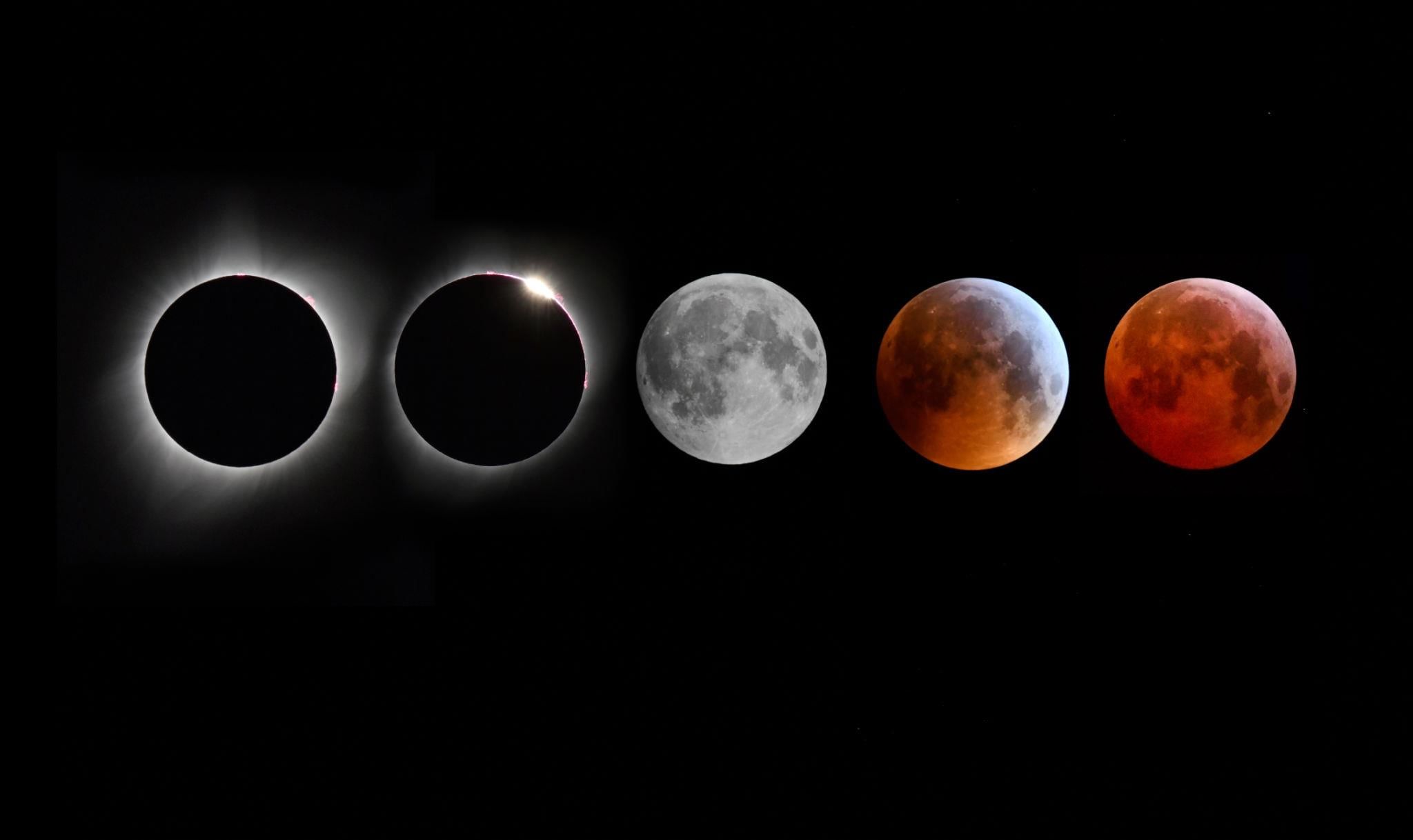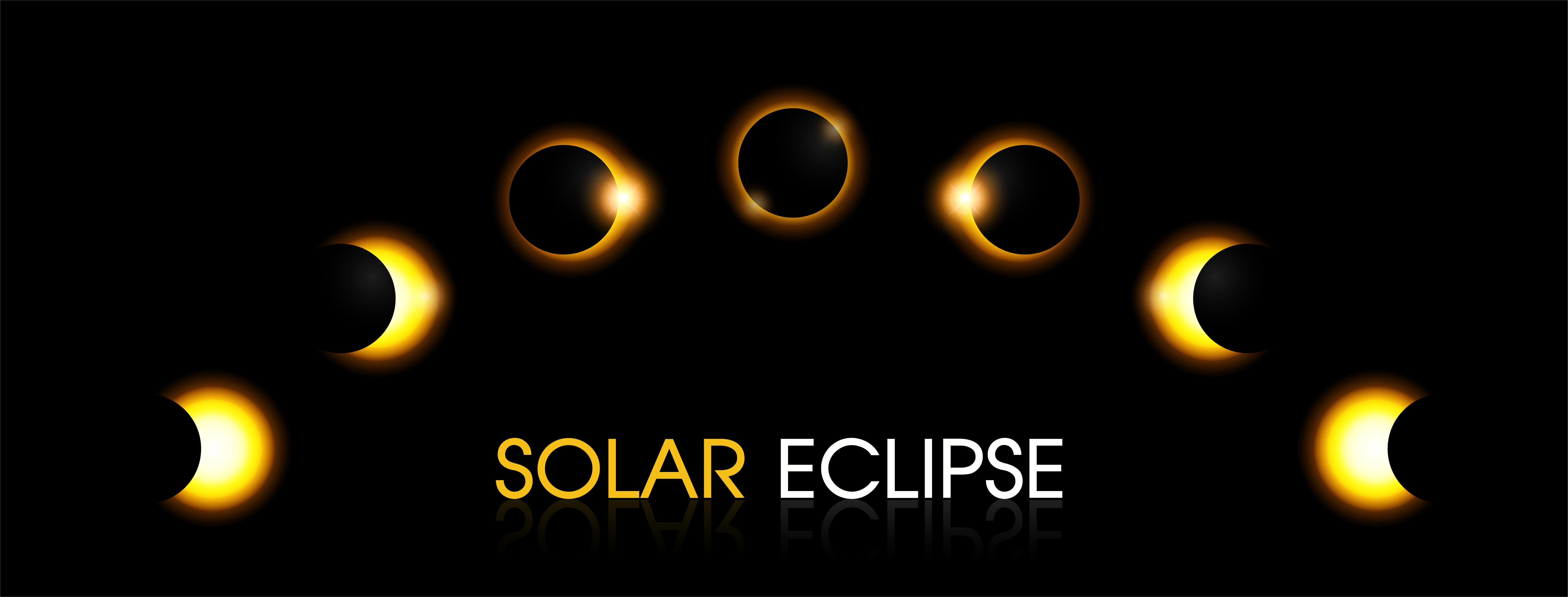Class 5 Exam > Class 5 Notes > Social Studies Class 5 ICSE > Chapter Notes: Solar and Lunar Eclipse
Solar and Lunar Eclipse Chapter Notes | Social Studies Class 5 ICSE PDF Download
| Table of contents |

|
| Introduction |

|
| What is an Eclipse? |

|
| Solar Eclipse |

|
| Lunar Eclipse |

|
| Points To Remember |

|
| Glossary |

|
Introduction
An eclipse is a special event in the sky when one object, like the sun or moon, gets hidden because another object comes in between. This happens because of the movements of the Earth, sun, and moon. In this chapter, we will learn about two types of eclipses: the solar eclipse, which happens during the day, and the lunar eclipse, which happens at night. We will also understand how these eclipses happen, their types, and some important safety tips to follow while watching them.

What is an Eclipse?
- An eclipse happens when one space object, like the sun or moon, casts a shadow on another space object, like the Earth or moon.
- This occurs because the object in the middle blocks the light from one object to another.
- From Earth, we can see two kinds of eclipses: one is called a solar eclipse, and the other is called a lunar eclipse.
Solar Eclipse

- The Earth moves around the sun, and the moon moves around the Earth because of their rotations.
- Sometimes, the moon comes exactly between the sun and the Earth during its movement.
- When this happens, the moon blocks the sunlight from reaching some parts of the Earth.
- This blocking of sunlight causes a solar eclipse, which can be seen during the daytime.
- The shadow of the moon falls on the Earth, and the places on Earth where this shadow falls experience the solar eclipse.
- The darkest part of the moon’s shadow is called the umbra, and the lighter part around it is called the penumbra.
- There are two types of solar eclipses: total solar eclipse and partial solar eclipse.
- In a total solar eclipse, people standing in the umbra of the moon’s shadow see the sun completely covered by the moon, making the sky very dark, almost like night, for a short time.
- In a partial solar eclipse, people standing in the penumbra of the moon’s shadow see only a part of the sun covered by the moon, so the sun is not completely blocked.
- For a solar eclipse to happen, the sun, moon, and Earth must be in a straight line.
- Solar eclipses happen once every 18 months, which means they don’t happen very often.
- A solar eclipse lasts only for a few minutes.
Question for Chapter Notes: Solar and Lunar EclipseTry yourself: What must be in a straight line for a solar eclipse to occur?View Solution
Fun Fact
- Never look at the sun directly because it can harm your eyes permanently.
- You should always use proper safety tools, like special glasses, to watch any type of solar eclipse.
- An adult should guide you while using safety tools to watch a solar eclipse.
Lunar Eclipse

- The Earth moves around the sun, and the moon moves around the Earth during their rotations.
- Sometimes, the Earth comes exactly between the sun and the moon during its movement.
- When this happens, the Earth blocks the sunlight from reaching the moon.
- This blocking of sunlight causes a lunar eclipse, which can be seen at night when the moon is full.
- The shadow of the Earth falls on the moon, making the moon look darker or reddish.
- The darkest part of the Earth’s shadow is called the umbra, and the lighter part around it is called the penumbra.
- There are two types of lunar eclipses: total lunar eclipse and partial lunar eclipse.
- In a total lunar eclipse, the sun, Earth, and moon are in a straight line, and the moon completely enters the Earth’s umbra shadow.
- During a total lunar eclipse, the moon looks red because some sunlight passes through the Earth’s atmosphere, and the blue light gets scattered, leaving the red light to reach the moon.
- In a partial lunar eclipse, the sun, Earth, and moon are not exactly in a straight line, so only a part of the moon enters the Earth’s umbra shadow, making only that part of the moon look dark.
- At least two partial lunar eclipses happen every year, which means they are more common than solar eclipses.
- A lunar eclipse usually lasts for a few hours, which is longer than a solar eclipse.
- It is safe to look at a lunar eclipse directly without any special tools because the moon does not produce its own light like the sun.
Fun Fact
- In many parts of India, some people believe that food cooked during a solar eclipse becomes poisonous.
- Scientists have studied this belief and found that it is not true; food does not become poisonous during a solar eclipse.
Question for Chapter Notes: Solar and Lunar EclipseTry yourself: What is a lunar eclipse?View Solution
Points To Remember
- An eclipse happens when one space object casts a shadow on another space object.
- We can see two types of eclipses from Earth: the solar eclipse and the lunar eclipse.
- A solar eclipse happens when the moon comes between the sun and the Earth, blocking the sunlight.
- A lunar eclipse happens when the Earth comes between the sun and the moon, blocking the sunlight from reaching the moon.
- Eclipses can be total or partial, depending on the position of the sun, moon, and Earth.
Glossary
- Heavenly body: A planet, star, moon, or any other object in space.
- Umbra: The darkest and innermost part of a shadow.
- Penumbra: The lighter outer part of a shadow.
- Partial: A part of something, not the whole.
- Scatter: To move far apart in different directions.
The document Solar and Lunar Eclipse Chapter Notes | Social Studies Class 5 ICSE is a part of the Class 5 Course Social Studies Class 5 ICSE.
All you need of Class 5 at this link: Class 5
|
88 docs|20 tests
|
FAQs on Solar and Lunar Eclipse Chapter Notes - Social Studies Class 5 ICSE
| 1. What is the difference between a solar eclipse and a lunar eclipse? |  |
Ans.A solar eclipse occurs when the Moon passes between the Earth and the Sun, blocking the Sun's light partially or completely. In contrast, a lunar eclipse happens when the Earth passes between the Sun and the Moon, causing the Earth's shadow to fall on the Moon.
| 2. How often do solar and lunar eclipses occur? |  |
Ans.Solar and lunar eclipses do not happen every month because the orbits of the Earth and Moon are tilted. On average, there are about two to five solar eclipses and two to four lunar eclipses each year, though not all are visible from every location on Earth.
| 3. Can you look directly at a solar eclipse? |  |
Ans.No, you should never look directly at a solar eclipse without proper eye protection, such as eclipse glasses or a solar viewer. Looking directly at the Sun can cause serious eye damage. A lunar eclipse, however, is safe to view with the naked eye.
| 4. What are some fun facts about eclipses? |  |
Ans.Some fun facts include that total solar eclipses are rare at any given location, occurring approximately every 375 years. Additionally, during a total solar eclipse, the temperature can drop, and animals may behave as if it is nighttime.
| 5. What key terms should I remember when studying eclipses? |  |
Ans.Key terms include "umbra" (the darkest part of the shadow during an eclipse), "penumbra" (the lighter part of the shadow), "total eclipse" (when the Sun or Moon is completely covered), and "partial eclipse" (when only a part is covered).
Related Searches















